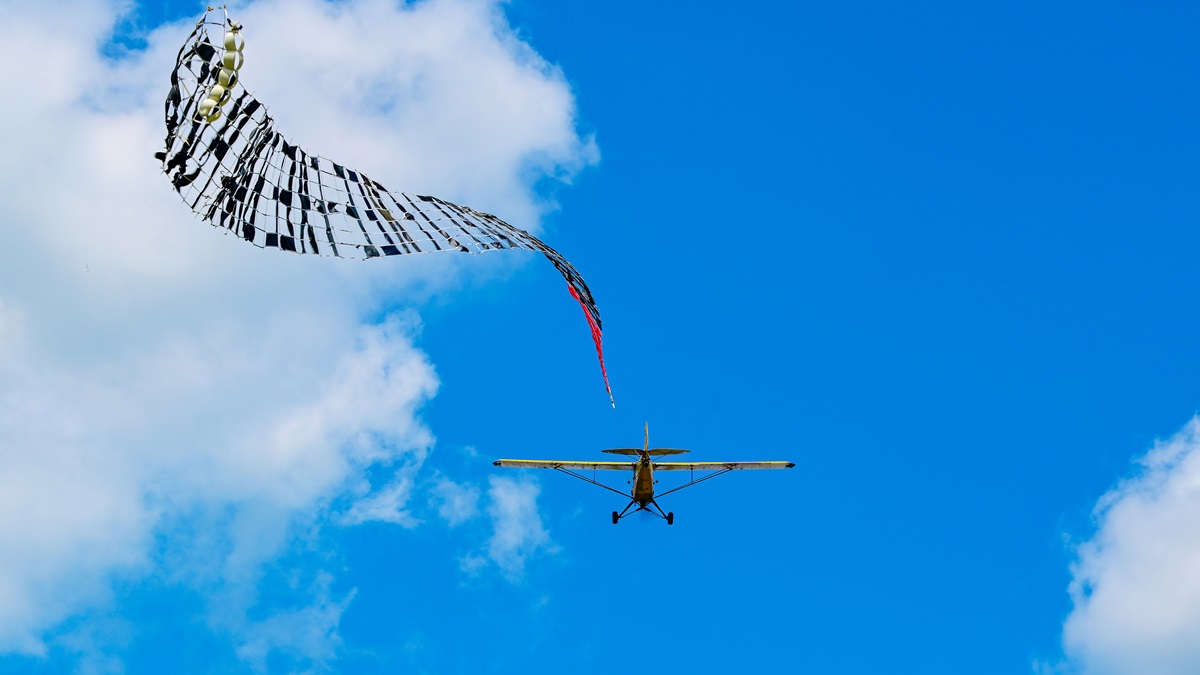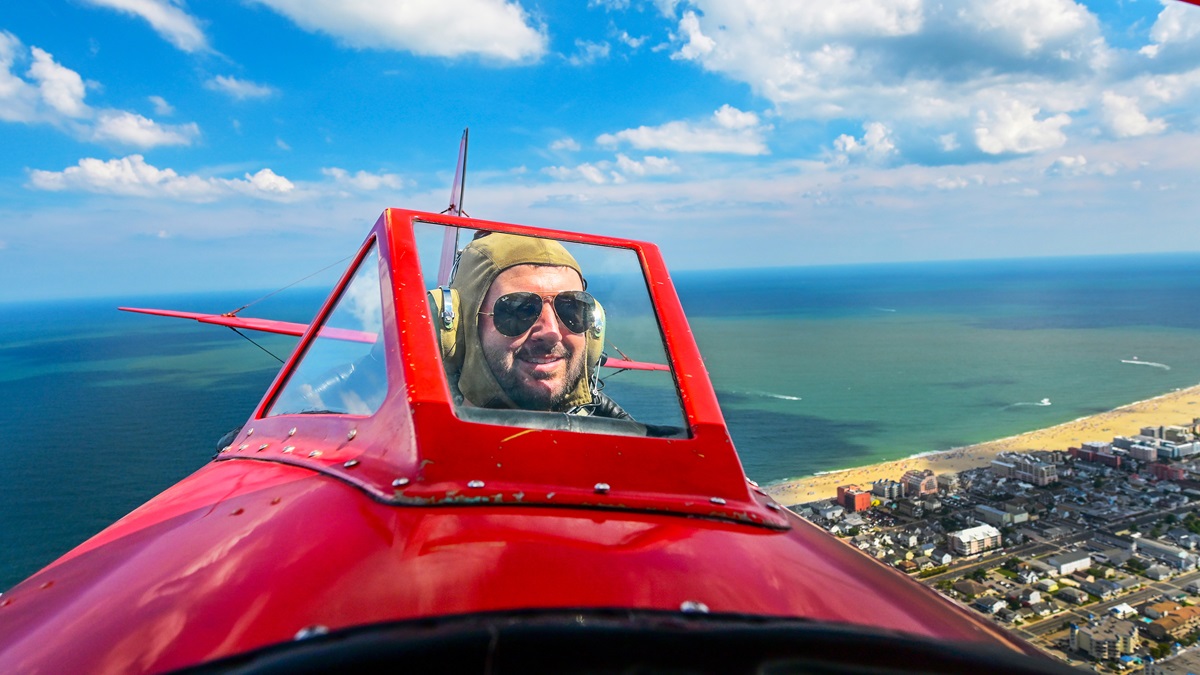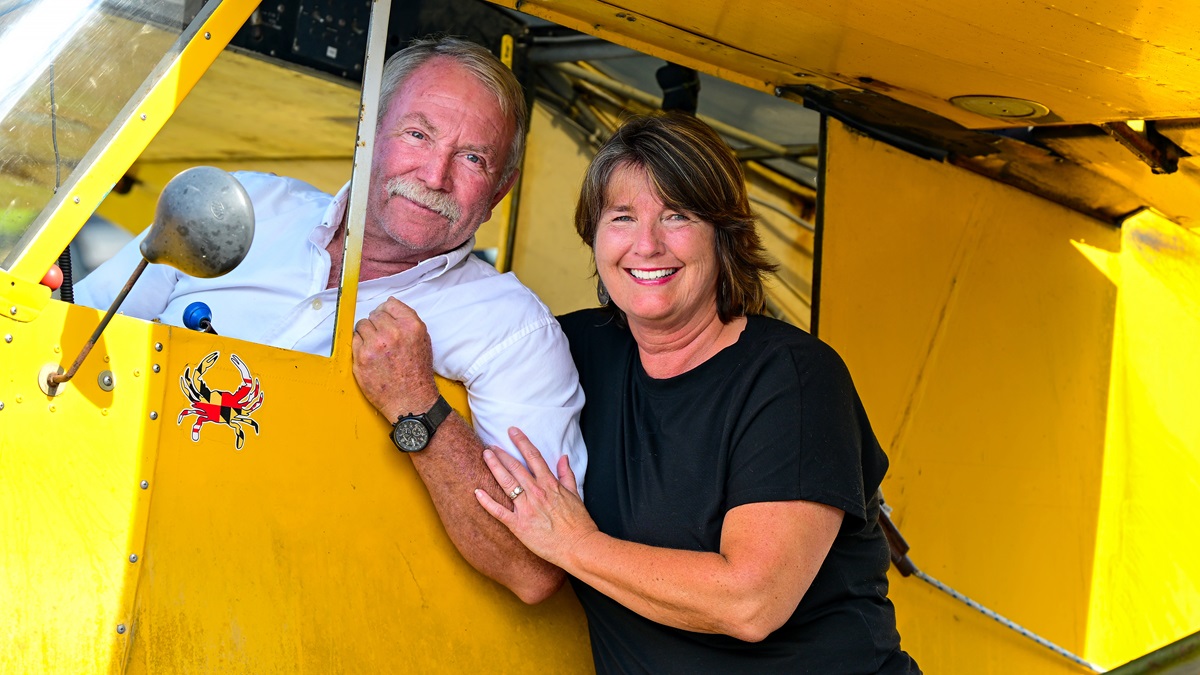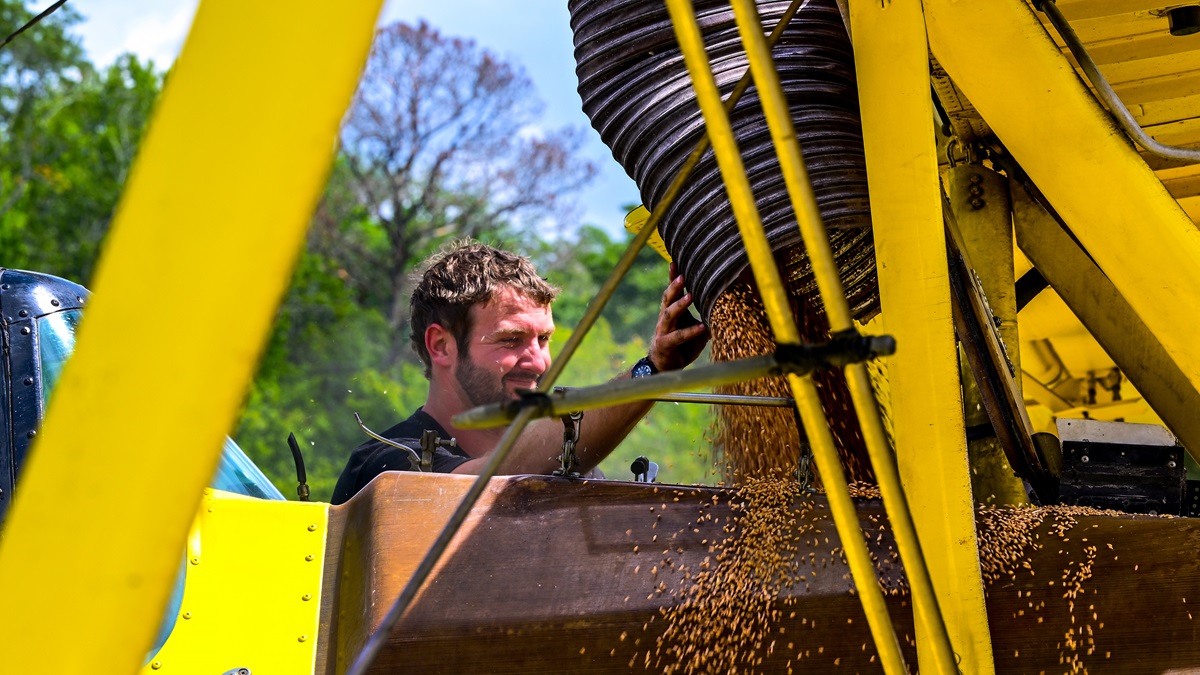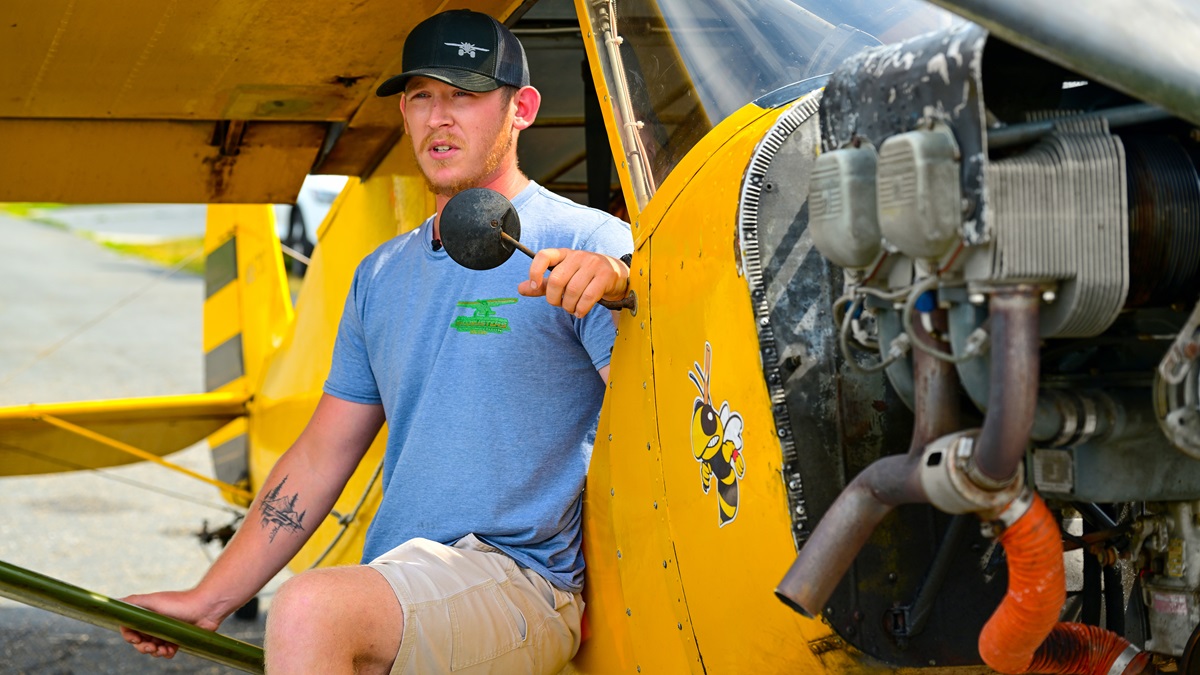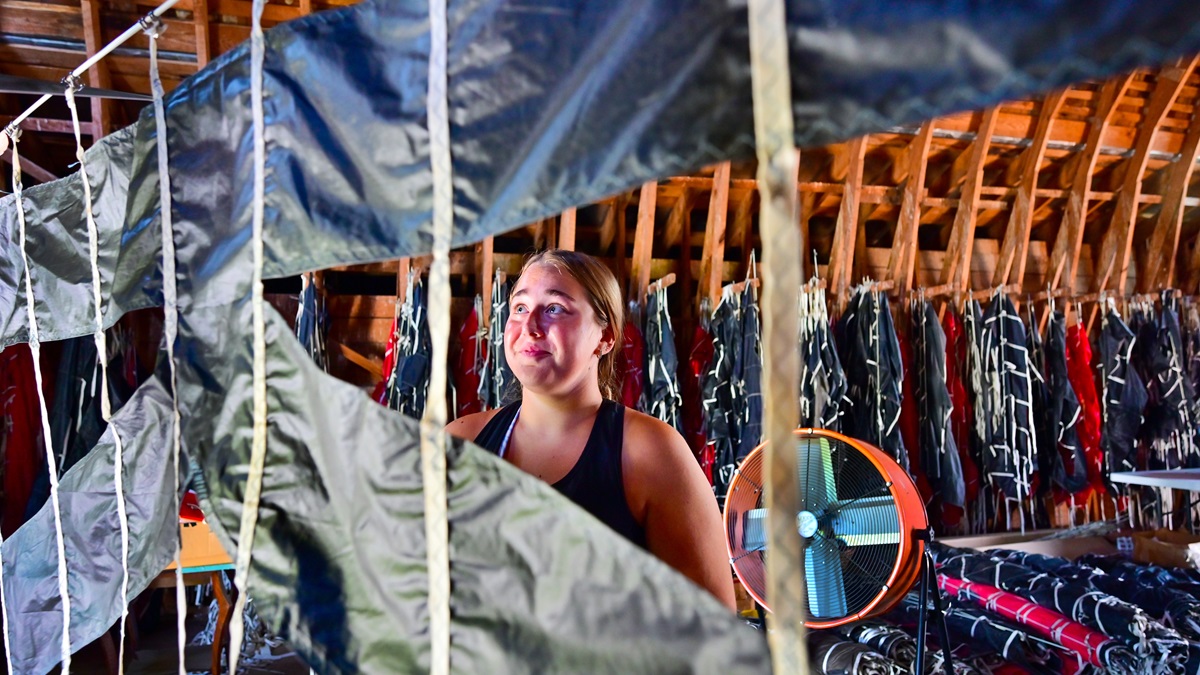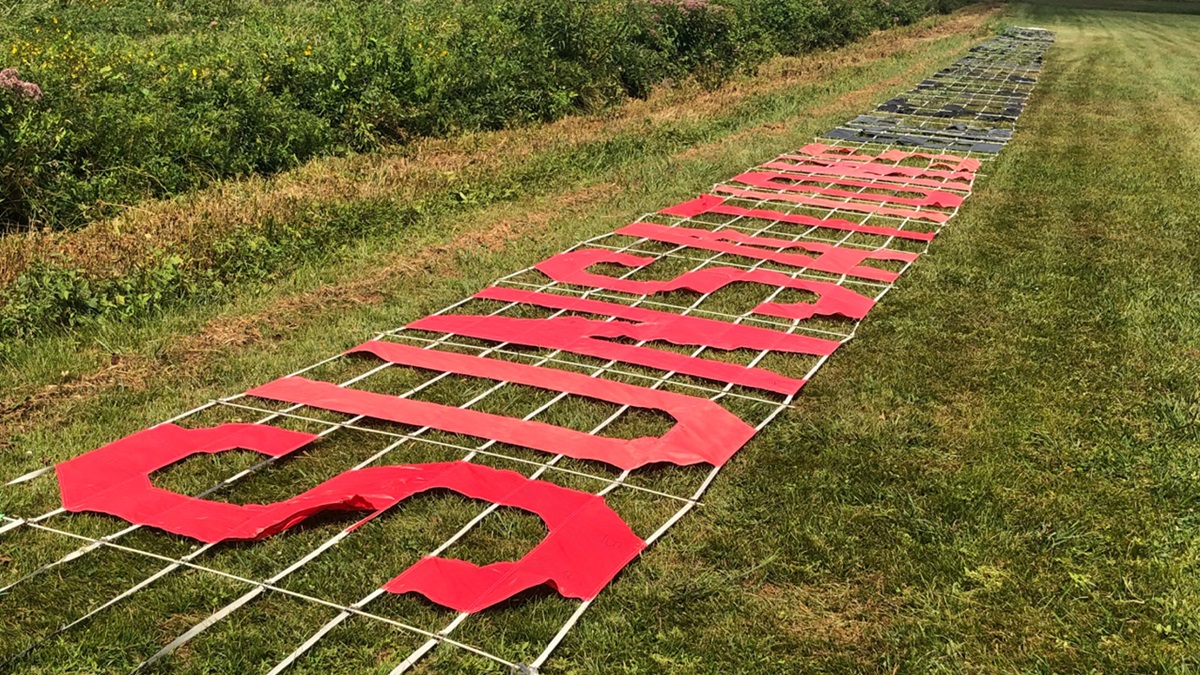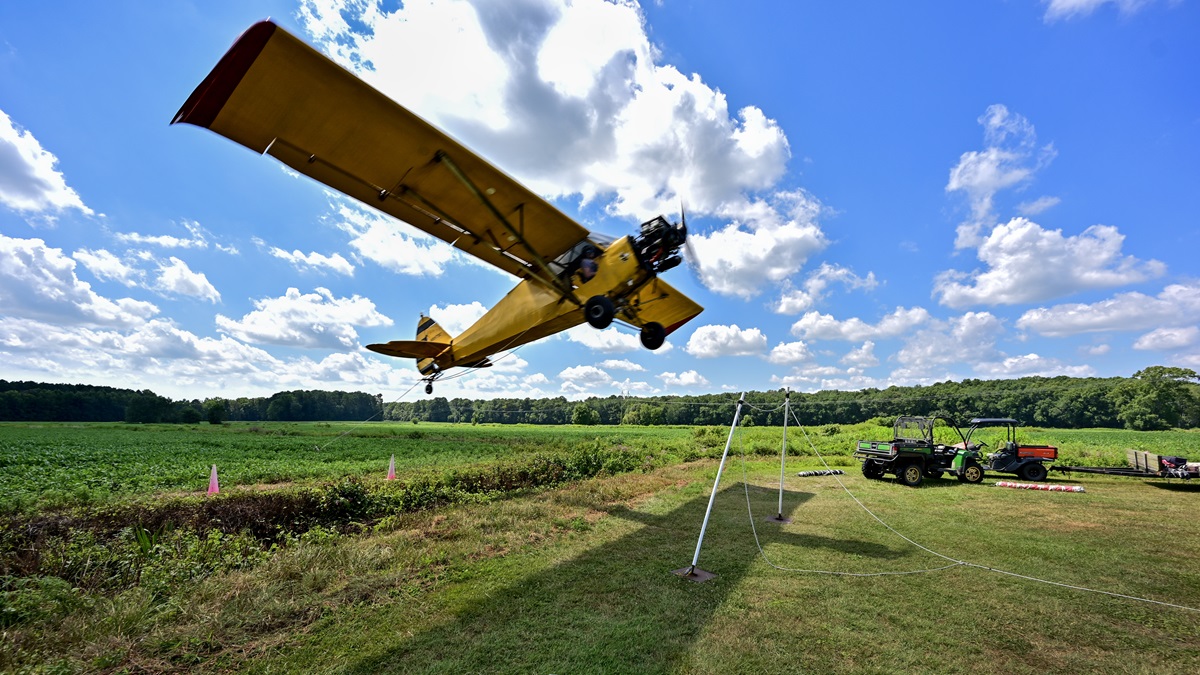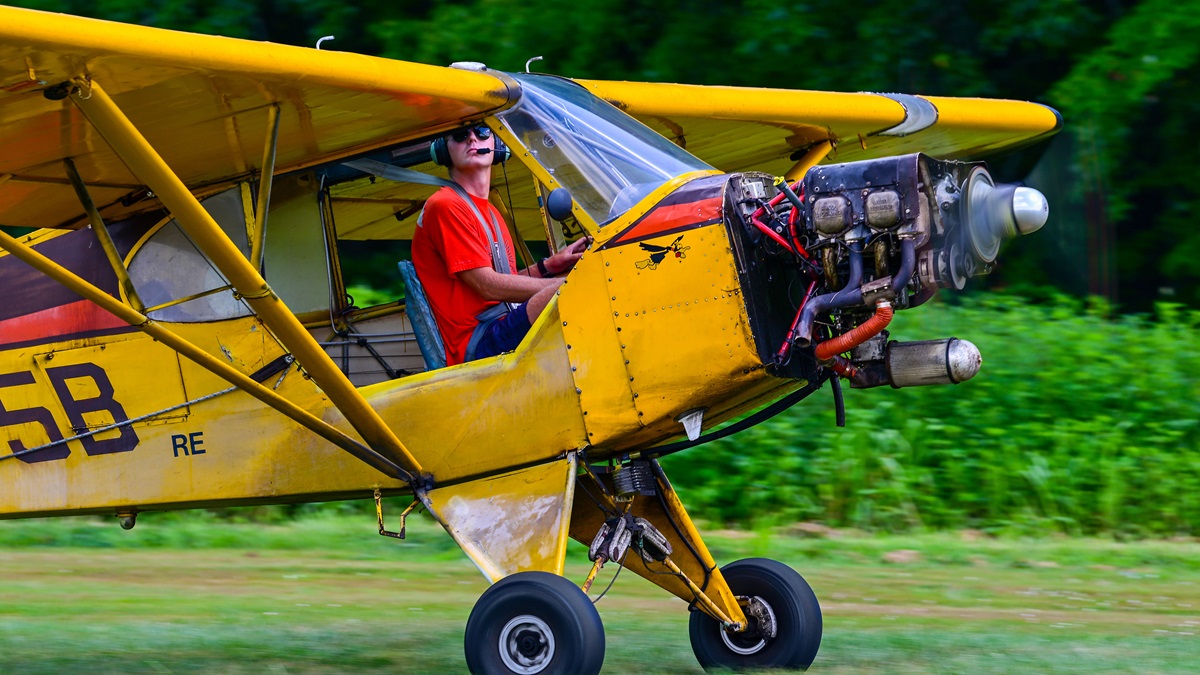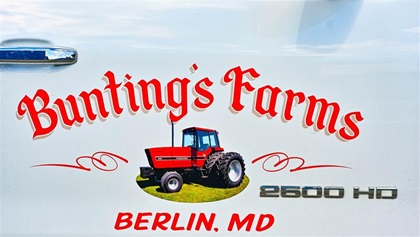Summer camp for pilots
Building hours at the beach
He’s a born-and-bred, tried-and-true, dyed-in-the-wool Maryland Eastern shoreman, with roots back to the 1600s, and a laidback surfer dude who loves to fly. So, it comes as somewhat of a surprise to learn that before he and his brother Ralph established Bunting’s Flying Services, Bob was a farmer and hardnosed agriculture instructor at the local high school. He hardly seems like a typical teacher. But then, it’s probably more appropriate than first thought; after all, he’s been hiring and mentoring low-time pilots since 1984, employing people from all over the country and giving them a place to stay while they build hours towing banners up and down Maryland’s famous 10-mile-long beach.
It’s been called Bunting’s “summer camp,” and many young pilots have put in the time buzzing along Ocean City’s white sand beaches towing banners for places like Hooters and Geico, and advertising AYCE steamed blue crabs, surf and bikini shops, and Candy Kitchen fudge, along with an occasional marriage proposal. The summer pilots stay in an old farmhouse near Berlin, Maryland, about 10 miles outside the chaotic—and expensive—tourist town. It’s the house Bob and his brother grew up in, his father farming soybeans and his mother raising chickens, an Eastern Shore staple. In fact, the difference between the carnival atmosphere of the surf town and the rural agricultural areas away from the beach is one of the most dynamic and interesting parts of the landscape, best seen from a low and slow aircraft like Bunting’s Grumman AgCats, their sightseeing 1987 Waco YMF–5 biplane, or the banner-towing PA–18 Super Cubs.
OCMD
Bunting and his wife, Holly, laugh about how long their families have lived here; when their children had to research their family background as part of their elementary school education, the couple discovered they are distantly related. The settlers in this part of the country trace their ancestry to the 1600s. “Buntings came here in 1640 and most never left,” said Bob. The land was settled by anglers, hunters, and farmers. The whole beachgoing tourist thing didn’t catch on until the early 1900s, and even then, getting to this narrow spit of land wasn’t easy. It wasn’t until the 1950s that a bridge was built across the Chesapeake Bay, and not until the 1970s that the second span was built to accommodate the many tourists who drove here for the beach, boardwalk, and saltwater taffy.
The William Preston Lane Jr. Memorial Bridge’s two parallel spans are among the world’s longest and most scenic overwater structures. The dual bridge—considered by some to be among the scariest to drive over—has no shoulder or emergency pull off lanes. It’s a length of 4.3 miles from end to end, and at its highest point is 186 feet above the bay. The original span opened in July 1952 and is now a two-lane roadway for eastbound traffic. Its parallel structure opened in June 1973 and has three lanes for westbound travelers. Each day, between 80,000 and 100,000 people drive across the Chesapeake Bay Bridge, with traffic soaring on summer and holiday weekends. Before the second span was constructed, backups to cross the bridge were often miles long. Even today, people are encouraged to drive at off-peak times.
The bridges are considered to be the gateway to the Eastern Shore, but it’s still another two-hour drive to the coastline. The drive goes through the agricultural hub of this area, past cornfields, soybean fields, and chicken “hotels” where poultry are raised—and sent away. Bunting’s family were farmers here; no one really considered the economic impact the beach would have until much later. Several general aviation airports serve the area, the largest being Easton (ESN) with two runways and a control tower, but savvy pilots know to avoid driving the bridge and fly over it to land at Bay Bridge Airport in Stevensville (W29) and start a shore vacation with a Maryland crab cake sandwich.
Bunting’s airfield (4MD1) is technically in the town of Berlin, 10 miles inland; they keep the sightseeing Waco at Ocean City Municipal Airport (OXB), which is also listed as in Berlin, but only two miles from Ocean City. There are two runways, and Runway 14 takes off over the Atlantic Ocean. The shore is split at the Ocean City Inlet, which was formed by a 1930 hurricane. To the north is the 10-mile stretch of beach that is Ocean City; to the south is the state and federal park land called Assateague Island. Bunting’s bright red Waco—named Cloud Dancer—is the perfect way for tourists to see how skinny the beach town really is, view the famous three-mile boardwalk and its amusements, or to see the windswept untamed beaches where wild ponies roam.
Summer camp
Ian Alumbaugh answered a classified advertisement on Barnstormers.com to come work for the Buntings. From Kansas, he had never been this far east in his life. The summer of 2022 was “long, hot, and really fun,” the commercial pilot said. He enjoyed working and living at the family farm, rising early with Chris Bunting for the preparation of the agplane work. “I’m from a farm family, so I fit in here. But there are too many people here for me,” he said. “I had a lot of fun with the guys I worked with and getting to know them was an experience I will never forget. They all treated me like family, and I felt like I was at home there. They took care of me.”
Alumbaugh was one of several young pilots Bunting hires for the season, in addition to young people who prepare and make the banners, as well as set up the towing operation. Since the 1980s, Bob believes nearly 180 young pilots have worked here. Chris Bunting, Bob and Holly’s oldest child, typically flies the crop aircraft and the sightseeing tours. Bob will often sub in to fly the Waco, too.
Like most of the pilots who come to work for Bunting in the summer, Alumbaugh had no experience flying banners. Chris taught him in the company Citabria. “Flying was also a lot of fun and getting to do what I did day in day out was an experience a lot of pilots don’t get to see or do in aviation,” he said. “I was blessed, to say the least, to have a mentor/boss like Bob and Chris. They were excellent to work for. It was a great summer for me, and I will never forget it.”
Alumbaugh said the longest day was the Fourth of July when he and other pilots flew nearly nine hours, each towing between 12 and 13 banners. The PA–18 has about three and one-half hours of fuel; the Ocean City run takes 30 minutes.
To pick up a banner, pilots first fly a figure-8 pattern around the field, then come in low—about 10 feet—and throw the hook out to catch the banner hung between two poles. Alumbaugh said he would then pull hard on the stick and, at full power, pitch up and snag the banner. “You know you have a good snap if it’s smooth; the banner feels like a ton of bricks if it’s a bad snap,” he said. Then the pilots fly out over the farm and to the beach. He said the flying was usually enjoyable, but he preferred to look out at the ocean, not at the beachgoers. “I loved seeing the wildlife; I saw dolphins, man-o-rays, sharks, even whales. I was thankful for smooth days; when it’s windy the banners—especially the big panels—feel like a big rudder. You can really feel them, they toss you around.”
In addition to the pilots, Buntings also offers summer work for area teens who come in and prepare the fields for the banners and put the letters together to make the banners. They tow two types—long sentence banners they make themselves and big panels for companies that supply them, like Geico. Sawyer Hudson spent her summer making banners, putting the letters together, and making repairs. She worked on the second floor of a barn, which was draped with hanging letters arranged alphabetically along the walls. Numerals and punctuation symbols lined another wall. She put the letters together, clipping them to spell out the wording such as “AYCE crabs at Hooters today at 4” and “Darlene will you marry me.” She then took the banners to the field to check, laying them out across the grass. “I did spell deak instead of deck but caught it before we used it.” She said she liked the personal messages best and thinks she prepared at least 12 marriage proposal messages that summer. “I always wonder if they said yes.”
Family business
Bob and his brother Ralph started the banner towing as a side business to their work on the farm and Bob’s teaching. Bob continued the business after Ralph was tragically killed in a towing accident. Eventually the business expanded to include crop dusting, banner towing, and sightseeing tours.
Holly studied and worked as a nurse, but once the couple had children, she was able to stay home and work alongside Bob. Holly worried when son Chris had an obvious interest in flying and towing banners.
“He had toy airplanes that he made banners for and flew in the sandbox my father made for him,” recalled Bob. When he finally flew a banner for the first time Chris said to his parents: “Do you have any idea what it’s like to wait your whole life to do something?”
Holly said flying is in Chris’s blood. “It’s a little scary watching him dip into the fields, but I know my son is an excellent pilot.” The company works from 13 airstrips across the Delmarva (Delaware, Maryland, Virginia) peninsula, seeding, spraying insecticides, and cover crop. “I think he likes the crops side of things because he is very social and enjoys talking with the farmers,” said Bob.
Chris spends most of his days taking care of the agriculture side of the family business, but he also enjoys flying the sightseeing tours. “This is my home, and we are rooted in agriculture. It’s basic, honest way of flying. I hope I can continue to fly this way although I worry it’s a dying art,” Chris said.
Bob is proud that so many young pilots started their flying careers here, and he said many come back to see him and the family and tell him it was the most fun flying they ever had. “Young pilots absorb this like a sponge. Banner towing is timeless, ageless. Every time you hear that sound of a little airplane coming down the beach, you look up.”

